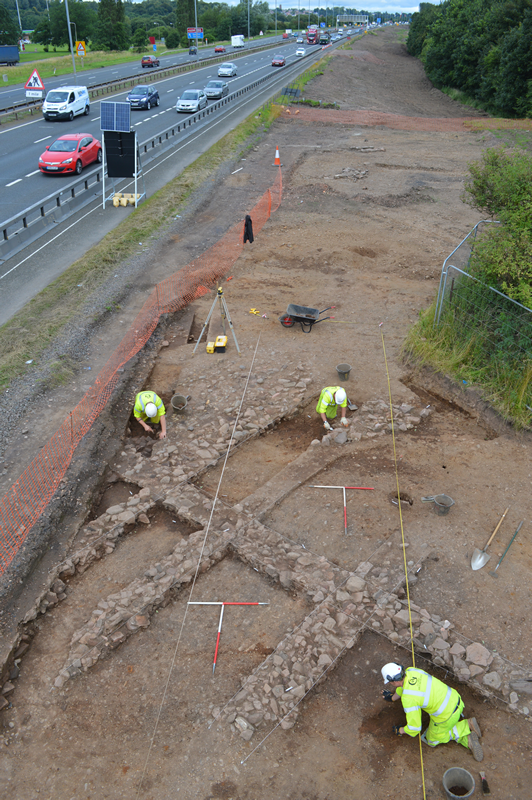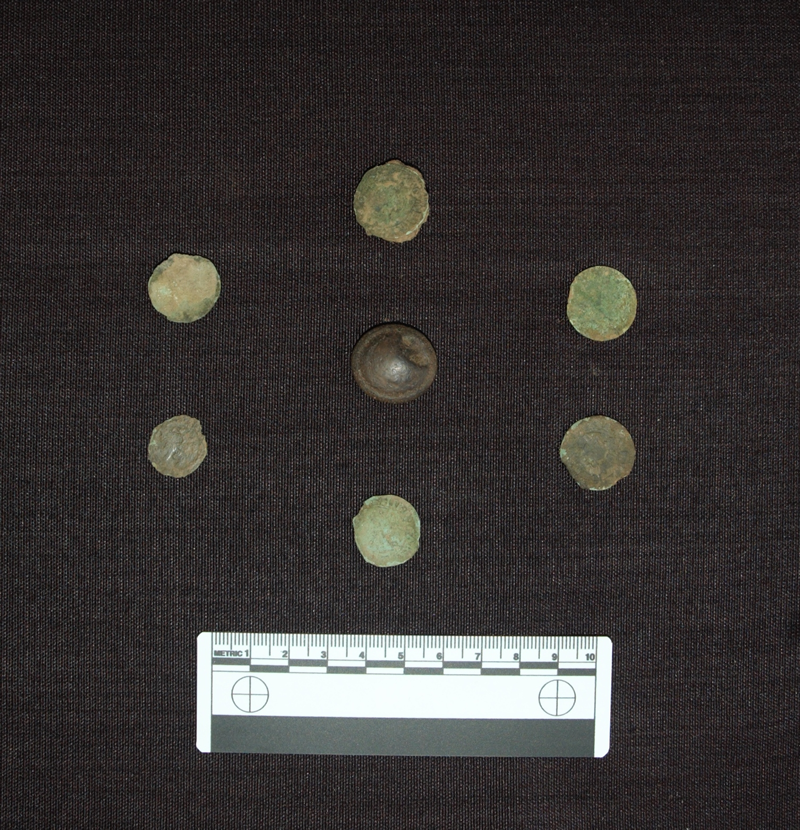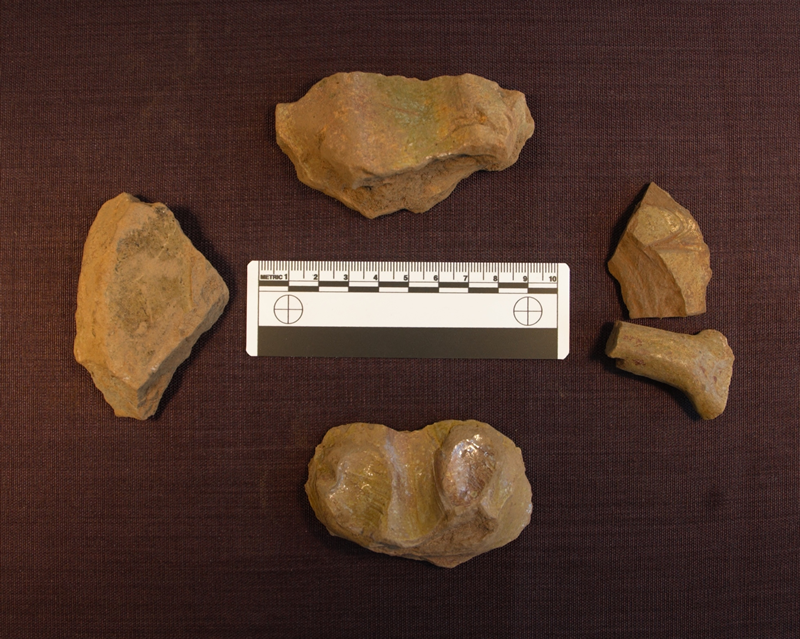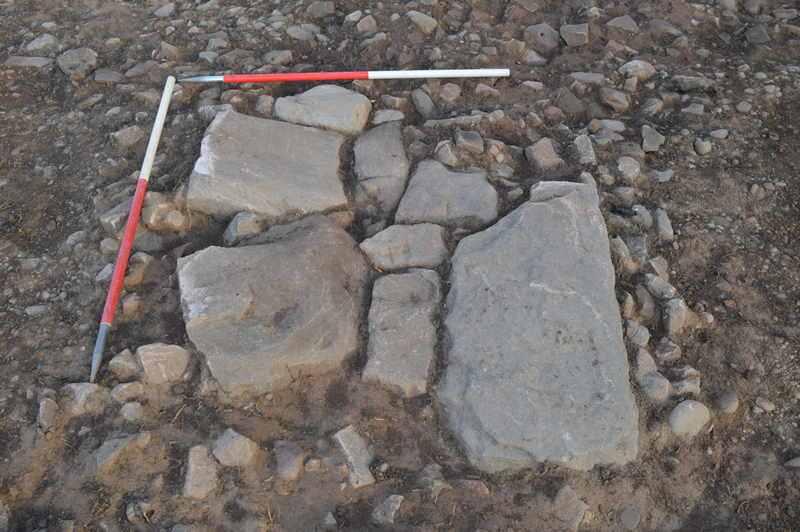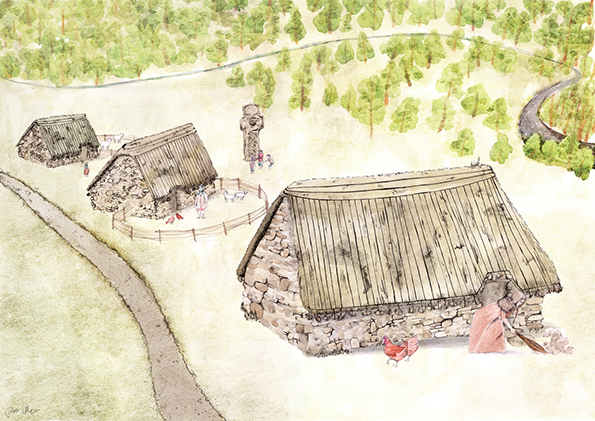Thousands of motorists each day travel along the M74 motorway, to the south of Glasgow, unaware of the fascinating 1000-year history emerging from the edge of the hard shoulder. Just opposite the Hamilton Services on the M74 in South Lanarkshire, GUARD archaeologists have discovered what could be the remains of the lost village of Cadzow. Cadzow was the name given to the community which lived on the edge of the River Clyde here in medieval times. In 1445, King James II gave his permission for the place to be renamed Hamilton and the residents were forced to move a mile or so south to the town’s current location.
The discovery was made by a GUARD Archaeology team led by GUARD Project Officer Kevin Mooney, as part of the M8 M73 M74 Motorway Improvements Project. The work was undertaken for the Scottish Roads Partnership (SRP), the company responsible for the improvements on the Central Scotland motorway network, with a construction joint venture of Ferrovial Agroman and Lagan Construction Group. To safeguard anything of historical interest unearthed during the £500 million roads project, SRP, under the advice of GUARD Archaeology, committed to notifying them when construction work that could impact on areas of archaeological potential would take place.
GUARD Archaeology were immediately contacted when the Netherton works began and while monitoring the preparation of the ground for a new lane of the M74 southbound, Kevin Mooney noticed old stone work just a few inches below the surface. Work stopped in this area to allow GUARD Archaeology to reveal the remains of two medieval buildings linked to the nearby spot where the 1000-year-old Netherton Cross once stood. This was a major religious monument, erected in the tenth or eleventh centuries. In 1925, Hamilton Town Councillors decided to preserve it by relocating it to the grounds of Hamilton Parish Church, where it is still considered to be the most important Christian relic of the area.
Warren Bailie, who managed the project for GUARD Archaeology, said: 'We are not sure of the age of the structures yet but as the Netherton Cross was tenth or eleventh century, the surrounding buildings could date from the same period. So we could be looking at something that’s 1,000 years old. No-one thought anything like this could have survived right on the edge of the motorway.'
The memorial stone, which marks the former position of the Netherton Cross, lying in the bushes next to the discovery site may provide a clue as to why the immediate area has survived being disturbed before.
The GUARD Archaeology team also found nine medieval coins, fragments of animal bone and over 200 sherds of glazed medieval pottery that could date to the 1400’s or earlier. 'We’ve also discovered two gaming pieces, one carved of stone and the other a circle of green-glazed medieval pottery, which could have been used in a medieval game of some sort,' said Kevin Mooney. 'This provides us with an all too rare glimpse into the past, shedding light on the medieval beginnings of Hamilton.'
